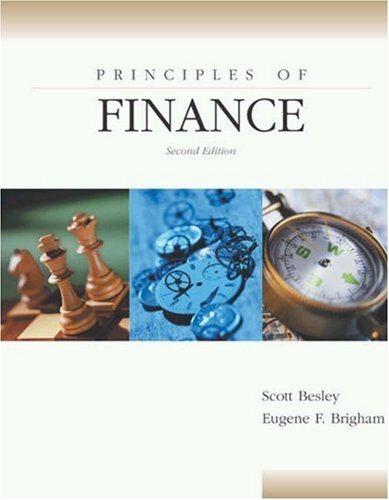Answered step by step
Verified Expert Solution
Question
1 Approved Answer
Credit card companies regularly offer very low introductory rates ( or teaser rates ) to entice borrowers to apply for an account. Generally, the teaser
Credit card companies regularly offer very low introductory rates or teaser rates to entice borrowers to apply for an account. Generally, the teaser APR annual percentage rate applies only during an introductory time period, after which the APR reverts to a much higher fixed or variable interest rate.
Higher rates are often charged for cash advances. Also, if you fail to live up to any of the terms of your credit card agreement, you may then be charged interest at a much higher default rate. For example, if you make a late payment, exceed your credit limit or bounce a payment check, then the account may switch to the default rate.
Review the following sample credit card disclosure box. Then answer the questions that follow. Do not round your answer.
Interest Rates and Fees
As required by law, rates, fees, and other costs of this credit card offer are disclosed here. All account terms are governed by the Credit Card Agreement sent with the card. Account terms are not guaranteed for any period of time; all terms, including the APRs and fees, may change in accordance with the Agreement and applicable law.
Annual Percentage Rate APR for purchases The introductory rate see notes below is until the first billing after the sixmonth anniversary of opening the account.
After that, your rate will be variable rate
Other APRs all other APRs are variable Balance transfers: The introductory rate is until the first billing after the sixmonth anniversary of the opening of the account.
After that, your rate will be
Cash advances:
Default rate: see notes below
Variablerate information Your APRs may vary during each billing period. The rate for purchases and balance transfers is determined by adding to the prime rate see notes below The rate for cash advances is determined by adding to the prime rate, but such a rate will never be below The default is determined by adding no more than to the prime rate. Grace period for repayment of purchases Not less than days if you pay your total new balance in full each billing period by the due date. Payment must be received by : PM on the due date. There is no grace period for balance transfers and cash advances.
Method of computing the balance Average daily balance including new purchases
Annual fee $
Minimum finance charge $
Miscellaneous fees Transaction fee for cash advances: of the amount of the transaction but not less than $
Transaction fee for balance transfers: of the amount of the transfer but not less than $ There is no balance transfer fee during the sixmonth introductory period.
Late fee: $ on balances up to $; $ on balances over $
Overthelimit fee: $
Bouncedcheck fee: $
Notes Introductory rate: Eligibility for the introductory rate is subject to your maintaining good credit. The rate indicated in this offer is subject to change to reflect changes in the prime rate see below at the time of your application.
Default rate: All your APRs may increase if you default under any Card Agreement that you have with us because you fail to make a payment to us when due, you exceed your credit limit or you make a payment to us that is not honored. Factors considered when determining your default rate may include the length of time your account with us has been open; the existence, seriousness, and timing of defaults under any Card Agreement you have with us; or other indications of account usage and performance on this or any other account you have with us
Prime rate: The prime rate currently used to determine your APRs for each billing period is the US prime rate published in the Wall Street Journal two business days prior to the billing date for that billing period.
This credit account carries a temporary low introductory rate teaser rate of This teaser APR applies to purchases made within the first months that the account is open. After this introductory period, the APR for purchases reverts to a higher variable APR. This regular APR for purchases is calculated by adding to the US prime rate assumed to be in the disclosure Therefore, if the US prime rate remains at then the regular APR for purchases is
For balance transfers, the introductory teaser APR is But after the introductory period, the APR for balance transfers reverts to the higher APR of The regular APR for balance transfers is calculated by adding to the prime rate assumed to be
This account does not have an introductory teaser APR for cash advances. For cash advances, the APR is calculated by adding to the US prime rate cited at in the disclosure Therefore, variable APR for cash advances is at least
These introductory and regular rates apply as long as you have not defaulted on any terms of the account. To receive these rates, you must make no late payments,

Step by Step Solution
There are 3 Steps involved in it
Step: 1

Get Instant Access to Expert-Tailored Solutions
See step-by-step solutions with expert insights and AI powered tools for academic success
Step: 2

Step: 3

Ace Your Homework with AI
Get the answers you need in no time with our AI-driven, step-by-step assistance
Get Started


